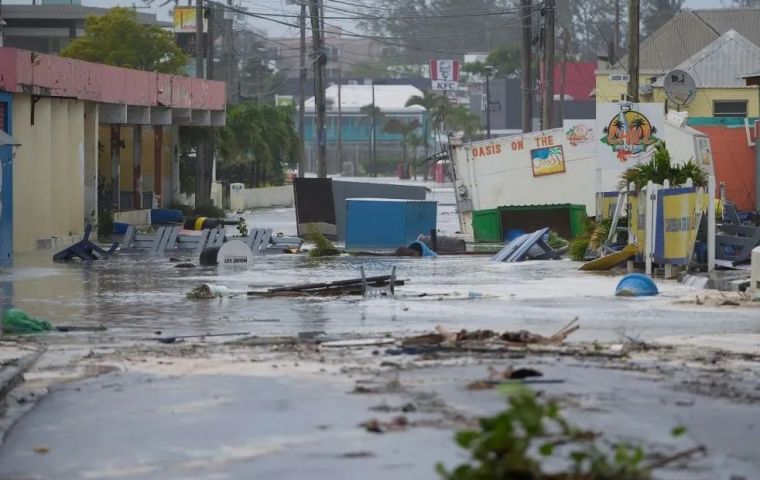MercoPress. South Atlantic News Agency
Hurricane Beryl marks early season beginning
 Beryl caused significant damage in Grenada killing at least three and is expected to hit Mexico and Belize later this week
Beryl caused significant damage in Grenada killing at least three and is expected to hit Mexico and Belize later this week After reaching category 5 in the Caribbean, Hurricane Beryl was not feared to reach Colombia's Caribbean shores but would nevertheless significantly affect navigation in the area. Strong winds hit Jamaica late Monday, sweeping away power lines and flooding the streets of other islands such as Grenada, it was also reported.
Although not expected to make landfall, Beryl marked a premature start to this year's Atlantic hurricane season. Experts believe the hurry stemmed from climate change.
Beryl caused great damage Monday to Grenada's islands of Carriacou and Petite Martinique. At least three people were reported dead. There was “devastation everywhere,” Governor Kevin Andrew told reporters.
President Dickson Mitchell held a press conference to announce that “almost all homes have been affected and there is no electricity on any of the islands, while communications remain difficult.”
Some 3,000 residents were advised to remain in shelters or avoid roads until further notice.
Colombia's National Risk Management Unit issued a yellow “warning” in the Caribbean departments of Magdalena, and Atlántico, as well as in the islands of San Andrés, Prudencia, and Santa Catalina given the “probable alterations of the oceanic conditions and the rains that could occur.”
The hurricane swirling through the Caribbean at a speed of around 35 km/h could bring maximum winds of 260 km/h, leaving waves of up to 3.4 meters.
The US National Oceanic and Atmospheric Administration (NOAA), forecasted a season for this year in the Atlantic well above average, with up to 13 hurricanes feared in the radar.
Beryl shocked meteorologists worldwide for its fast upgrade from a tropical causing havoc in the Caribbean.
A Category 5 hurricane is the highest level on the Saffir-Simpson scale, which ranks hurricanes according to their sustained wind speeds. Hence, Beryl has sustained winds of at least 157 mph (252 km/h), which may lead to severe flooding in coastal areas.
The last Category 5 hurricane in July was Emily in 2005, which peaked on July 17 of that year. Hurricanes of this intensity are rare, and their occurrence outside the peak months of the hurricane season (August through October) is even rarer.
Beryl initially developed as a tropical wave between the coast of Africa and the Caribbean and quickly became a tropical depression, a tropical storm, and finally a hurricane.
Regarding Beryl's immediate future, some strong winds are expected in Cuba but the bulk of the damage is believed to be taking place in the Mexican State of Quintana Roo, on July 5, affecting Yucatan, Campeche, and neighboring Belize.
The hurricane's projected path could also threaten parts of the US East Coast, it was reported.




Top Comments
Disclaimer & comment rulesCommenting for this story is now closed.
If you have a Facebook account, become a fan and comment on our Facebook Page!